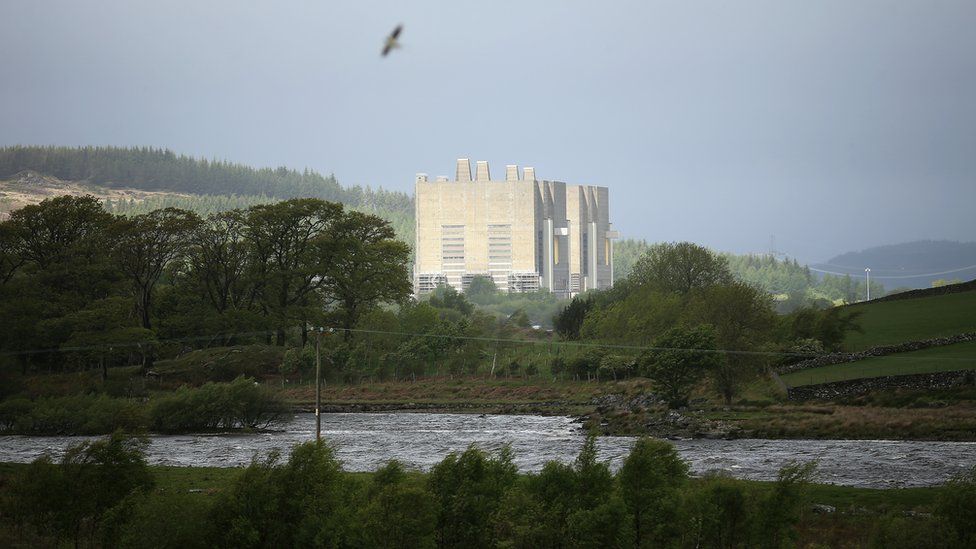TikTok is neither banned nor controlled, even as an investigation found employees accessed U.S. user data
Perspective by Shira Ovide
A bunch of states and now Congress are seeking to ban government employees from using TikTok. Let’s get real.
Those bans hardly ban anything.
Many American politicians are grandstanding over TikTok for your attention.
The same U.S. officials saying that TikTok is a gateway to Chinese spying and manipulation have done almost nothing real about that risk.
So far, people with power in the United States haven’t been willing to actually block Americans from using TikTok, even as new reporting revealed that TikTok employees improperly accessed data on Americans.
But people in power also haven’t followed through on TikTok restrictions that could protect Americans.
If you love TikTok, you should know that eventually the app could be kicked out of the United States and you might lose access. Even if that never happens, you deserve real action and not political hot air on potential technology abuses — including those from companies in China.
There are proposed national security restrictions of TikTok that could be promising. But they’re stuck.
What exists right now may be the worst of two worlds: TikTok is neither banned nor controlled.
Why American leaders don’t trust TikTok
TikTok is owned by a Chinese internet giant, ByteDance. With more than 1 billion users globally, TikTok is (arguably) the first wildly popular app in the United States that comes from a Chinese company. U.S. elected officials and most Americans don’t trust China.
U.S. officials have said that because businesses in China are not truly independent from the government in Beijing, Chinese Communist Party officials might force TikTok to hand over data it has collected on American users, or TikTok might use the app to promote Chinese propaganda or censor material that Beijing doesn't like.
TikTok says that U.S. officials have provided little evidence of TikTok being a patsy of Beijing.
There are examples of Chinese online information campaigns that have tried to twist your beliefs. And on Thursday, ByteDance said it had fired four employees after an internal investigation found they had accessed data on two journalists and other U.S. users while attempting to track down a company leak. (Forbes has more details on this.)
The real and perceived concerns about TikTok were among the reasons that then-President Donald Trump ordered TikTok banished from the United States in 2020. He backtracked and TikTok struck a deal with American companies to reduce the risk of Chinese intrusion or sabotage.
Then the whole thing fell apart. Since then, TikTok has continued to operate in the United States relatively unchanged.
But U.S. officials also haven’t done much about TikTok
What have been called bans of TikTok in at least 19 states, by the U.S. armed forces and now in a proposal in the government funding bill don’t do very much
In practice, the policies restrict government employees in those jurisdictions — schoolteachers, park rangers or Justice Department lawyers — from downloading TikTok on phones issued by their employers. Some public colleges have said they’ll restrict people from using TikTok on their WiFi networks.
Security experts say it’s sensible to limit what government workers can do on government-issued phones. Mostly, though, these government TikTok restrictions are symbolic.
Workers and soldiers often just download and use TikTok on personal devices. Some members of Congress are TikTok regulars, too. College kids can use TikTok on cell networks. And the rest of us are free to TikTok with abandon.
The idea to formally block TikTok from the United States remains alive. It is likely to gain new life after ByteDance acknowledged it caught a few employees snooping on Americans.
But so far, elected leaders have been unwilling to impose a ban, which risks backlash from TikTok fans and will likely run into First Amendment legal challenges.
So here we are. Stuck.
There’s a path to restrict TikTok and make it a blueprint against abusive tech
Behind the scenes, TikTok and a secret U.S. committee that oversees foreign companies have been working on a middle ground since 2019. My colleague Drew Harwell has done impeccable reporting on the negotiations, and there are some interesting but untested and imperfect ideas in there.
Among the proposals, Drew reported this week, is an arrangement for U.S. authorities to have veto power over appointments of top TikTok executives and for a three-member board to oversee the company. To try to make sure what you see in the app isn’t influenced by China’s government, the negotiated arrangement proposes independent audits of TikTok’s systems that tailor videos to people’s interests or censor material.
“If you believe TikTok is an existential threat to America, this is a solution,” said Samm Sacks, a cyber policy specialist with the New America think tank.
But Drew reported that those TikTok policy proposals are in limbo. Banning TikTok has been politically unpalatable so far, but any compromise on TikTok may be, too.
What elected leaders could do about TikTok
If U.S. officials are concerned about protecting our data, they could put their weight behind the negotiated restrictions on TikTok. And they could use the TikTok negotiations as a road map for oversight of all apps from China and other authoritarian countries.
Law makers could also get tougher on cyberattacks from China. They could pass a national privacy law that would force TikTok — and Meta, Google and all companies that suck up morsels of your information — to collect less of it.
Elected leaders could push through proposed legislation that would require algorithm-dependent internet companies like TikTok and YouTube to be more transparent about their inner workings.
Not everyone agrees that restricting TikTok is good enough. Nothing can completely remove the potential risk of Chinese sabotage or snooping. But the unwillingness thus far to either ban or restrict TikTok leaves Americans no better protected than we were two years ago.
One tiny win
If you love TikTok but you’re also worried about TikTok, here’s one change you can make: Don’t share your contacts with TikTok.
Repeatedly and annoyingly, TikTok will ask you to hand over the contact list on your phone or link to your Facebook account. The information can be revealing about you in ways you don’t imagine. Here’s how to shut it off.
Consensus is building in Washington that the most popular social media app among teenagers is a national security risk. How do you explain that to the app’s users?
By Christian Paz@realcpaz Dec 24, 2022
/cdn.vox-cdn.com/uploads/chorus_image/image/71789452/1450835299.0.jpg)

TikTok is getting banned from a growing number of federal and state devices, underscoring how political winds are turning against the platform given worries about China and raising questions about its future.
The latest development is the decision by Republicans and Democrats in Congress to include a measure banning TikTok from devices used by federal employees in the $1.7 trillion year-end omnibus bill setting out federal funding for the next year.
It follows similar moves by a host of state governments to keep TikTok off devices held by state government workers.
The decisions appear unlikely to lead to further bans on TikTok, which is owned by Chinese-based company ByteDance, on private devices, despite the introduction of such a ban in Congress last week.
“As far as individual users are concerned, at least for right now and for the time being, I don’t think it’s going to have much of an impact on the accessibility to individual consumers because the direct threat to users has not yet been recognized,” said Cyrus Walker, the founder and managing principal at cybersecurity firm Data Defenders.
The wildly popular social media platform has made serious inroads in the United States, with more than 85 million users in the U.S. alone, and is widely used across the country — particularly by people under the age of 20.
Walker, however, said the attention given to the bans on TikTok for devices used by federal and state workers could spark a wider conversation about privacy and security concerns with the app.
He also said it could lead private companies to tell their employees to keep the app off work phones.
“As we see this momentum build in the municipal space restricting or banning TikTok altogether, I think you’re going to see corporations, particularly larger ones, follow suit because of the threat of corporate espionage that could take place at a larger level,” he said.
Lawmakers have become increasingly concerned that by downloading the app, government workers are giving the Chinese government potential access to their devices that it could use to collect data on U.S. citizens.
Hannah Kelley, a research assistant in the technology and national security program at the Center for a New American Security, said that if the TikTok ban on federal government devices does become law, it would at least make some Americans question the validity of those concerns and ask themselves: “If the government isn’t comfortable with this app existing on federal infrastructure, should I be comfortable with it operating within my own home?”
Sen. Marco Rubio (R-Fla.), part of the group of bipartisan lawmakers who introduced legislation that would prohibit the use of TikTok nationwide, argued the possibly security threats of the app do extend to regular citizens.
“The federal government has yet to take a single meaningful action to protect American users from the threat of TikTok,” Rubio said in a statement.
“This isn’t about creative videos — this is about an app that is collecting data on tens of millions of American children and adults every day,” he added.
Introducing the bill, Rubio and Reps. Mike Gallagher (R-Wis.) and Raja Krishnamoorthi (D-Ill.) cited concerns recently raised by the FBI and Federal Communications Commission (FCC) that the app is being used to spy on Americans in that way.
FCC Commissioner Brendan Carr said in an interview with Axios last month that Congress banning the app was the only path forward in light of such concerns.
“There simply isn’t a world in which you could come up with sufficient protection on the data that you could have sufficient confidence that it’s not finding its way back into the hands of the [Chinese Communist Party],” Carr said.
The concerns date back to the Trump administration, which attempted to ban the social media platform in 2020 with an executive order that was later blocked by a federal court.
TikTok, which has pushed back on the concerns, said it was disappointed with states banning the app on government devices.
“We’re disappointed that so many states are jumping on the bandwagon to enact policies based on unfounded, politically charged falsehoods about TikTok,” a spokesperson said.
The spokesperson also denied that TikTok shares information with the Chinese Communist Party.
Experts are skeptical about that denial, however. They say that since TikTok is owned by a Chinese-based company, it is likely subject to Chinese laws, which require companies to comply with requests from the government for access to data originating from such apps.
“I mean, basically, you’re giving China an open door into your device and into your network,” Walker said.
“Just that relationship alone is a significant threat and risk to U.S. government assets,” he said, referring to ByteDance’s ownership of TikTok.
Beyond a ban on TikTok, Walker said the potential security threats posed by the platform could also plausibly be reduced if ByteDance were to sell it to an American company and completely divest itself from the app’s ownership. But he thinks such a move is unlikely.
He recommended that regular citizens worried about their privacy should simply delete TikTok from their phones.
Jamil Jaffer, founder and executive director of the National Security Institute at George Mason University’s Antonin Scalia Law School, similarly advised that users practice more caution.
“American consumers should be much more careful with their kids and their families using TikTok because while it may be a very appealing app to use from a social perspective, it is hugely problematic from a data collection and surveillance perspective,” he said.
“The problem is they’re collecting data on Americans … and use that data to leverage it against us as a nation,” Jaffer said. “I don’t think the ban should be about the government alone.”
“Clearly government employees shouldn’t have TikTok on their phone, but the app should be banned across the United States,” he added.










